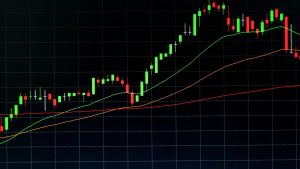Think you need thousands of dollars to get started in crypto? You don’t.
In fact, starting small, even with just $100, can be a smarter way to learn the ropes while managing your risk.
In this guide, we’ll cover:
- Why starting with $100 makes sense
- How to prepare before you invest
- Simple, low-risk strategies for small portfolios
- Common mistakes to avoid
- How to grow your account over time
💡 Why Starting Small Makes Sense
With crypto’s volatility, starting with $100 is a way to:
- Learn how markets work without risking big money
- Test exchanges, wallets, and trading strategies
- Avoid emotional overreactions to small price swings
- Build a habit of consistency before scaling up
Think of your first $100 as tuition for your trading education.
🛠 Step 1: Choose a Low-Fee, Reputable Platform
With a small starting balance, fees can eat into your gains fast.
What to look for:
- Low or zero trading fees on popular pairs (e.g., BTC/USDT, ETH/USDT)
- Fractional crypto purchases allowed (most exchanges do this)
- Good security (2FA, withdrawal whitelists, proof-of-reserves)
Popular Choices in 2025: Binance, Coinbase Advanced, Kraken, Bybit.
🔐 Step 2: Secure Your Crypto
Even $100 deserves proper protection.
- Keep trading capital on the exchange only when active
- For long-term holding, move coins to a hardware wallet (Ledger, Trezor)
- Enable 2FA and never share recovery phrases
📈 Step 3: Pick a Beginner-Friendly Strategy
Option 1: Dollar-Cost Averaging (DCA)
- Buy a fixed amount (e.g., $25) each week or month regardless of price
- Smooths out volatility over time
- Works well with major assets like Bitcoin and Ethereum
Option 2: Diversified Buy & Hold
- Allocate your $100 into 2–3 coins:
- 60% BTC or ETH (foundation)
- 20% large-cap altcoin (SOL, BNB, ADA)
- 20% emerging altcoin or Layer 2 (e.g., ARB, OP, BASE-native)
Option 3: Swing Trading Micro Positions
- Use small capital to learn chart patterns and short-term moves
- Keep position sizes tiny to protect your balance
- Focus on highly liquid coins to reduce slippage
⚠️ Step 4: Avoid Common Small-Portfolio Mistakes
- Overleveraging: Leverage can wipe you out faster than you can blink
- All-in Bets: Don’t put the full $100 on a single risky coin
- High-Fee Traps: Avoid coins with low liquidity and high spreads
- Overtrading: Every trade costs, be selective
📊 Step 5: Track and Review Your Progress
- Use a portfolio tracker (CoinStats, Delta) to monitor performance
- Keep a journal of trades or buys, and note the reason for each move
- Review monthly to see what’s working and what’s not
🧠 Growing Beyond $100
Once you’ve built confidence and a strategy:
- Increase your DCA amount from $25 to $50 or more
- Compound gains – reinvest profits instead of cashing out early
- Expand knowledge – learn about DeFi, staking, and more advanced plays
🔥 How EPIQ Trading Floor Helps You Grow
At EPIQ Trading Floor, even small accounts get big advantages:
- ✅ Daily market analysis to guide entry & exit points
- ✅ Education on DCA, swing trading, and portfolio growth strategies
- ✅ Macro Dashboard to track BTC dominance, altseason signals, and sentiment
- ✅ 24/7 pro trader chat for instant feedback
👉 Start your 3-day free trial and learn how to grow your $100 into a strategy that lasts.
🧾 Final Thoughts
You don’t need a huge account to start investing in crypto, you need discipline, patience, and a plan.
Your first $100 is about learning, not flipping into a fortune overnight. Start small, master the basics, and scale up over time.
Not Financial Advice (NFA): This article is for educational purposes only. Always do your own research and manage your risk.










Responses